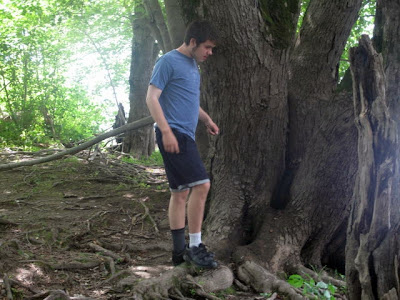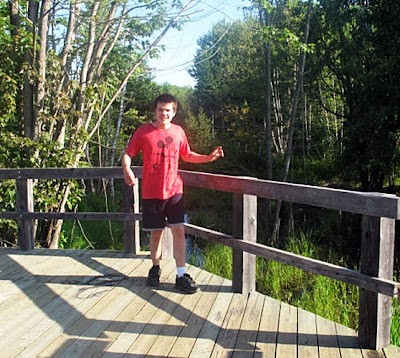Dr. Allen Frances is engaged in an all out revolt against the DSM-5 revision process and those conducting the revision. Underlying his revolt is an admission, at times express but always implicitly present, that if we have seen a series of false epidemics in areas such as Autism, ADD and childhood bipolar disorder then he, as much as anyone is responsible for those epidemics. Dr. Francis oversaw the DSM-IV revisions on which he now puts great weight with his claims that we are now witnessing
three false epidemics in autism, attention deficit and childhood bipolar. Of late he has focused in particular on what he calls the false autism epidemic and in an attention grabbing catch phrase
the autism generation.
Having acknowledged his own failures Dr. Francis apparently feels free to say anything he wants about the DSM-5 revision process without first informing himself or without regard to unintended consequences for those whose lives are affected by those diagnostic descriptions. His comments about the allegedly false autism epidemic demonstrate that, contrary to message in his own sermons, he has not learned any lessons from his own previous DSM revision failures. In his speeches he proceeds in defiance of his own warnings that the APA DSM teams must proceed with caution when he offers unsubstantiated personal opinions without regard for their unintended consequence.
In
The Autism Generation Dr. Frances offers a number of explanations for the increases in autism diagnoses, some of which undoubtedly play a significant but only partial role in explaining the startling increases in autism diagnoses:
The natural reaction to any plague is panic. Parents are now fearful that every delay in speech or socialization presages autism. Childless couples decide to avoid having kids. Parents with autistic children are desolate and desperate to determine its cause.
The British physician Andrew Wakefield’s vaccine theory became wildly popular among parents, many of whom began to withhold vaccination (thus subjecting their own and other children to the risk of entirely preventable, and sometimes serious, illnesses). Vaccination seemed a plausible cause because of the fortuitous correlation between getting shots and the onset of symptoms. Wakefield’s work has now been thoroughly discredited as incorrect and dishonest science. But fear of autism is so great, and the reactions to it so irrational, that in some circles Wakefield continues to be revered as a false prophet.
Other factors must be behind the sharp rise in the diagnosis. Before DSM IV, autism was among the most narrowly and clearly defined of disorders. Symptoms had to begin before age three and comprised a striking and unmistakable combination of severe language deficits, inability to form social relationships, and a preoccupation with a very narrow set of stereotyped behaviors. In preparing DSM IV, we decided to add a new category describing a milder (and therefore much more difficult to define and distinguish) form of autism, called Asperger's Disorder. This seemed necessary because some (still quite rare) children presented with more or less normal language development, but with grave social and behavioral difficulties. We knew that Asperger’s would likely triple the rate of autistic disorders to about 1 per 500-1,000, but this doesn't explain the new rate of 1 per 38.
A second possible explanation for the explosion in autism is that previously missed cases are now being more accurately diagnosed. This is probably a factor, but again only a minor one.
Perhaps, then, an environmental toxin is causing an epidemic outbreak of autism. This has been the most popular theory, but it, too, is a small factor, at best. There has been no sudden environmental change since 1994 to account for an explosion in rates. This doesn't entirely disprove an environmental vector, but it does make the odds quite remote – especially since there is a far more plausible explanation.
The most likely cause of the autism epidemic is that autism has become fashionable – a popular fad diagnosis. Once rare and unmistakable, the term is now used loosely to describe people who do not really satisfy the narrow criteria intended for it by DSM IV. Autism now casts a wide net, catching much milder problems that previously went undiagnosed altogether or were given other labels. Autism is no longer seen as an extremely disabling condition, and many creative and normally eccentric people have discovered their inner autistic self.
Where Dr. Frances came up with the idea that Dr. Andrew Wakefield is responsible for increasing autism diagnoses made by doctors and health care professionals is beyond me. Attributing autism increases to panic stricken parents reacting years later to a the Wakefield article is pure nonsense. It seems like nothing more than a bizarre attempt to get unthinking support for his opinions from those elements of the health care community who jump up and cheer whenever anyone attacks Dr. Andrew Wakefield.
I know of no one who disputes the obvious fact that part of the increase in autism diagnoses is attributable to the addition of Asperger's Disorder to the pervasive developmental disorders or autism section of the DSM-IV. As Dr. Frances acknowledges though that DSM-IV revision, together with more accurate diagnoses play only minor parts in explaining the increase.
Dr. Frances then goes on to dismiss, in an extremely simplistic and superficial analysis substantiated only by his personal opinions, the idea that environmental toxins are possible sources of explanation for the autism increases. Dr. Frances appears to be fundamentally ignorant of the CATS, the California Autism Twins Study, the positions statements of the IACC and Dr. Thomas Insel who has stated about the CATS findings:
"These new findings are in line with other recent observations supporting both environmental and genetic contributions to ASD, with the environmental factors likely prenatal and the genetic factors highly complex and sometimes not inherited"
NIMH director Thomas R. Insel, M.D. Dr. Frances' dismissal of environmental toxins as possible contributors to the increases in autism diagnoses is inconsistent with current thinking and information concerning autism causation. It indicates that his opinions concerning autism should be considered carefully before being accepted. When Dr. Frances goes on to refer to autism as a fad diagnosis and to talk about an autism generation he feeds the ignorance and prejudices of those who scowl at parents of autistic children when their children experience stress, even meltdowns, in public places. He does not help, he harms, autistic children by spreading misinformation about autism disorders. He does so without providing any study or other authority beyond his own opinion for his dismissal of autism as a fad diagnosis.
My son is 15 years old and he received his autism diagnosis 13 years ago in 1998. That diagnosis resulted from consultations with a developmental pediatrician who conducted testing in sessions which lasted several months. We were referred to the pediatrician by our family doctor. In all we began seeking an explanation for our son's obvious lack of development in areas like speech, play and family interaction in such games as peek a boo when my son was 1 year old in 1997. We had not heard of autism at that time and we were not seeking a particular diagnosis, fashionable or otherwise. We were not reacting in panic because of an article in a medical journal. We wanted to know if our son was experiencing serious difficulties that would require specific medical help in order for him to grow and develop. We were exercising our parental responsibilities and caring for our son.
Some of Dr. Frances' views and expressions of caution about the DSM-5 revisions seem to be based on real experience and common sense and I hope they are given serious consideration by the DSM-5 teams. I hope though that he follows his own direction to proceed with caution and limits his comments about autism to matters on which he can provide evidence and research findings. I am sick and tired of professionals who dismiss parental concerns about their children's development and use them as tools to advance their own opinions. I assume that Dr. Frances, a respected psychiatrist, was placed in oversight of the DSM-IV because he contributed much to his profession and the people those professionals serve. It will be better for autistic children though if Dr. Frances abandoned his stereotypical thinking about parents and educated himself about current autism research and thinking before expressing unsubstantiated and possibly harmful opinions.






































